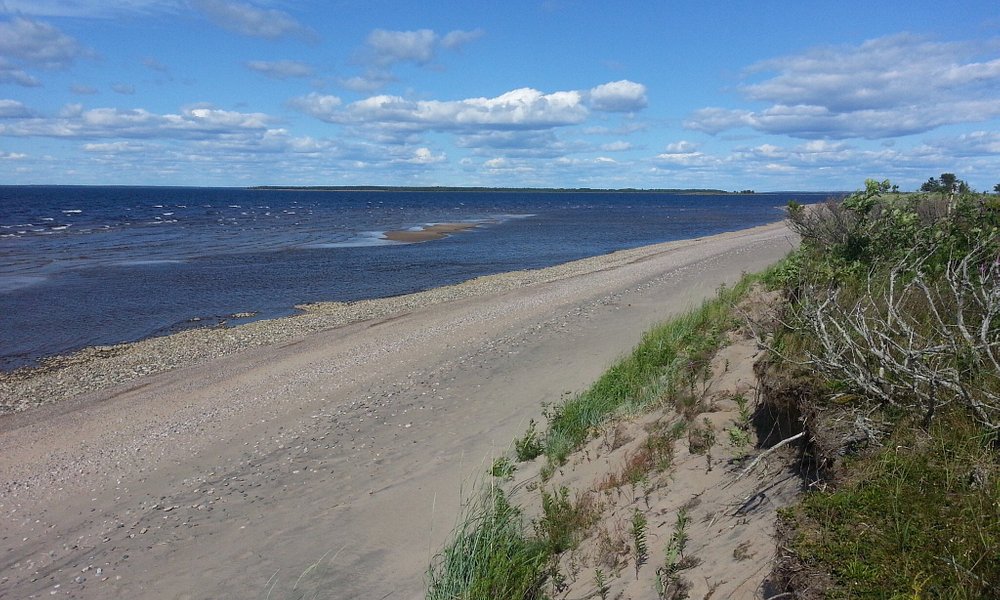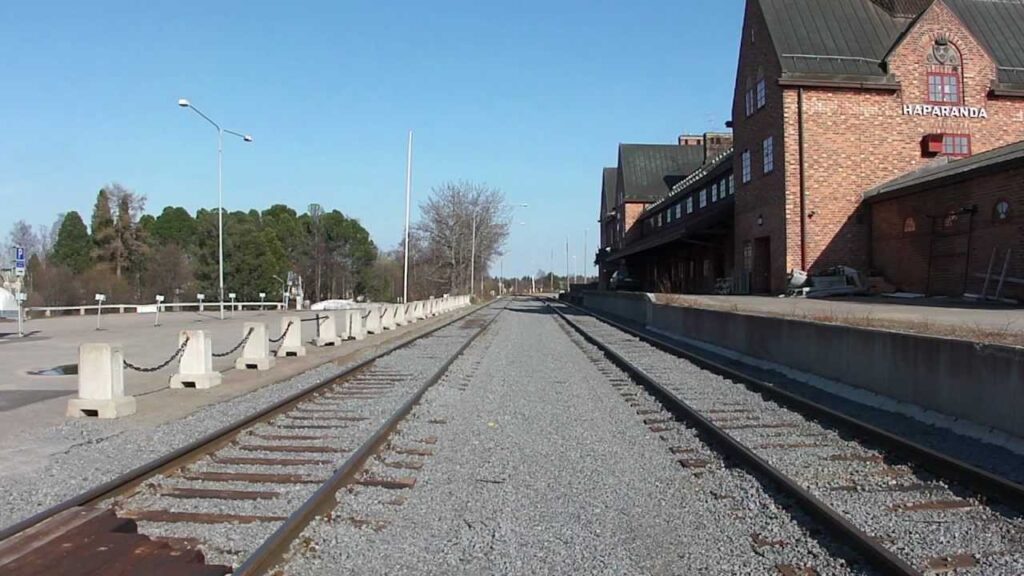Haparanda is a locality and the seat of Haparanda Municipality in Norrbotten County, Sweden. It is adjacent to Tornio, Finland. Haparanda had a population of 4,856 in 2010,[1] of out of a municipal total of 10,200 inhabitants.
Haparanda is, despite its small population, for historical reasons often still referred to as a city. Statistics Sweden, however, only counts localities with more than 10,000 inhabitants as cities. Haparanda is located at the northerly extreme of the Swedish coastline, and far removed from large cities. Its summers are very mild for a coastal location so far north, and winters are normally not extremely cold in spite of the relative proximity to the Arctic Circle.
Haparanda has strong connections to Tornio and the Finnish side of the river and bilingualism of Swedish and Finnish is common although Swedish is the sole official language and the mother tongue of a vast majority of inhabitants. In 2010, it was estimated that 70% of Haparanda’s inhabitants spoke Finnish as a second language.
The municipality itself, on the other hand, uses the term Haparanda stad (City of Haparanda) not only for the town itself, but for its whole territory (927 km2 or 358 sq mi). At 24° 8′ E, Haparanda is Sweden’s easternmost settlement.
Sports
Haparanda/Tornio play in the second tier bandy division in Sweden, allsvenskan. Haparanda hosted matches in the Bandy World Championship 2001.
Other sports clubs located in Haparanda include:
- Asplöven HC (ice hockey)
- Haparanda FF (soccer)
The impact of the Finland-Sweden international border
Memorial at Haparanda commemorating Finnish children evacuated to Sweden in World War II. The buildings on the right are in Tornio, Finland.
Relations between the neighbouring towns have always been friendly. A large portion of Haparanda’s population speak both Swedish and Finnish. Today the two towns are closely interconnected economically and socially; they constitute a transborder conurbation marketed as “EuroCity”. Since Sweden and Finland are in different time zones, Haparanda is one hour behind Tornio. This allows a unique spectacle on New Year’s Eve, when people can welcome in the new year twice. Since 2005 the cities have rebranded themselves as “Haparanda-Tornio” in Sweden, and “Tornio-Haparanda” in Finland.
In 2020 and 2021, this interconnectedness has experienced economic interruptions due to the COVID-19 pandemic and the differing national responses in Sweden and Finland. Sweden has generally speaking implemented slightly more lax restrictions while Finland has closed borders and slightly stronger restrictions. Some Swedes have also experienced prejudice on the Finnish side of the border, by Finns, due to the worse Covid situation in Sweden.
Haparanda has a railway station, but the line is now only used for freight. The station buildings are used by a youth club, and occasionally for concerts. They include what were originally customs and border control posts. This was the only route open between Russia and Germany in World War I, and during World War II many of the approximately 80,000 Finnish children evacuated to Sweden entered the country here.
75,000 WWI prisoners of war were exchanged between the warring sides and 27,000,000 kg of mail, mostly from or to prisoners of war, was sorted at Haparanda.
Rail gauge
The bridge over Torne river with dual gauge tracks.
Haparanda is connected to the Swedish national network by the Haparandabanan (Haparanda railway). The bridge between Haparanda and Tornio is the only direct connection between the Swedish and Finnish rail systems. The two networks use different track gauges, requiring all freight wagons crossing the border to have their cargo reloaded or their bogies exchanged. There is a dual gauge track, in a Swedish 1,435 mm (4 ft 8 1⁄2 in) and Finnish 1,524 mm (5 ft) four rail gauntlet track formation, between Haparanda and Tornio.
Buildings
An IKEA retail store opened 15 November 2006 in a new commercial enterprise zone at the Haparanda-Tornio border, and is the northernmost IKEA store in the world. Though goods are priced in Swedish kronor only, instore signage is in both Swedish and Finnish. This single store attracts a claimed two million visitors every year, and has triggered “piggy-back” development of other large-scale retail outlets and a prototypical US-style shopping mall on the site. Although shops in Haparanda itself accept euros and Swedish kronor, many have closed in the face of competition from the out of town development.
Notable buildings besides the rail station (1918) include the Stadshotell (hotel and former town hall) of 1900, which has a first floor stateroom with magnificent chandeliers of Orrefors glass, and the landmark pepperpot-shaped watertower, erected in 1920. It no longer provides all the town’s water, only the communal hot water supply. Haparanda’s uncompromisingly modern church is by Bengt Larsson of the ELLT studio, and dates from 1967, its predecessor being destroyed by fire in 1964.
Plans for a new building containing a multipurpose arena seating 2,500 and more commercial development were announced in 2013. It will be sited on the border. Construction started in 2016 with a planned completion date in 2018.




